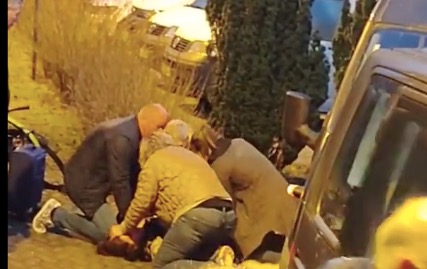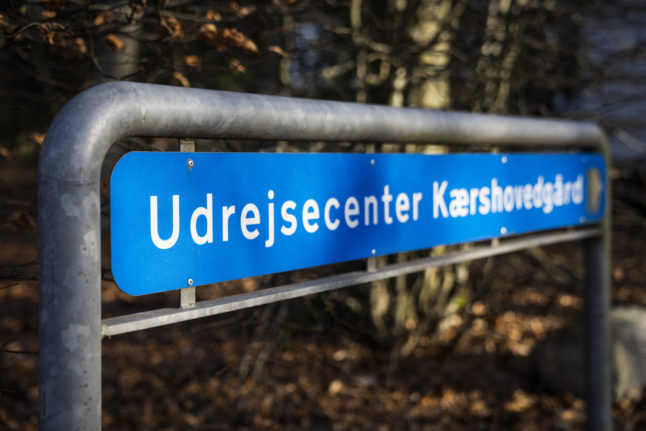Immigration Minister Mattias Tesfaye has been summoned to a parliamentary committee, at which lawmakers from other parties can demand the minister respond to the incident, broadcaster DR reports.
The video was shared by Trampoline House, a Danish independent citizens’ resource NGO for asylum seekers and refugees. The organisation wrote on social media that the woman, a mother of three, was injected with a tranquiliser during the attempted deportation.
In the video, which was taken at the Avnstrup asylum centre, four people can be seen holding the woman to the ground, with her head held against the paving stones. She is visibly shaking in the footage. A man in civilian clothing then brings restraints which are used to tie her.
(1/2) SKRÆMMENDE VIDEO af morgenens tvangsfjernelse af den kurdisk iranske mor fra Hjemrejsecenter Avnstrup. Moderen blev smidt på jorden foran alle, mens fire personer forsøgte at passificere hende ved at sætte sig ovenpå hende. pic.twitter.com/7LfDCpjLKX
— Trampolinhuset (@trampolinhuset) March 29, 2022
The Danish Return Agency (Hjemrejsestyrelsen), the agency responsible for processing deportations, and the North Zealand police told news wire Ritzau that medicine had not been administered to the woman, however. They confirmed that physical restraint was used.
The woman, an Iranian national, was to be deported from Denmark with her two oldest children while her youngest child, who is one year old, remains in Denmark with its father, according to Trampoline House, which also wrote on social media that splitting the family represents a breach of the ECHR’s right to family life.
She is also reported to hold an expired Iranian passport.
“I can’t bear to think of the fate that awaits the Kurdish woman who was yesterday forcibly deported. I have called Tesfaye in to consultation so he can explain if this is really how we treat people if it’s up to the government,” Sikandar Siddique of the Independent Green party wrote on Twitter.
Rosa Lund of the Red Green Alliance said in comments to newspaper Politiken she was unaware Denmark was able to forcibly deport rejected asylum seekers to Iran because this would require a repatriation agreement with Iran, which Denmark does not have.
The Ministry of Immigration and Integration told the newspaper that this is in fact possible for persons who have an Iranian travel document, regardless of whether the document is valid.
“This forced deportation testifies to a complete failure of the Danish asylum policy. Both ethically and practically,” Trampoline House told The Local in a written comment.
The organisation called for more humane treatment of vulnerable asylum seekers and argued that this would in fact benefit the established policy of deporting persons whose claims for asylum are not granted.
“In Denmark we take away people’s basic rights and confine them into isolated camps. In the Netherlands the rejected are allowed to work, study and enjoy a much more normal life, until departure date,” it added, noting that in 2017, 4.4 percent of rejected asylum seekers left Denmark voluntarily, while the Netherlands recorded a proportion of 44 percent.
READ ALSO: Inside Denmark’s Kærshovedgård deportation camp
According to broadcaster TV2, the Danish Return Agency has confirmed that the woman left Denmark on a flight following the episode captured in the video, but has now returned to the country after sustaining an injury during the journey.
Danish law allows the use of physical force in deportations if necessary when a person without legal residence status in Denmark does not comply voluntarily with their deportation travel.
According to the country’s Aliens Act (Ulændingeloven), such enforced deportation must be “with respect for the individual and without unnecessary use of force”.
Police are responsible for carrying out deportations based on the decisions made by immigration authorities.
“If people don’t leave voluntarily, they can be deported forcibly. As long as you stick to restraint and don’t turn to violence, it’s within the framework [legally, ed.],” Niels Henrik Christensen, a lawyer specialised in asylum, refugee and immigration law, told TV2.
“Force is used and (authorities) have that right. Nothing in the video surprises me. I’m not saying that to defend it, but that is allowed,” he said.



 Please whitelist us to continue reading.
Please whitelist us to continue reading.
Member comments